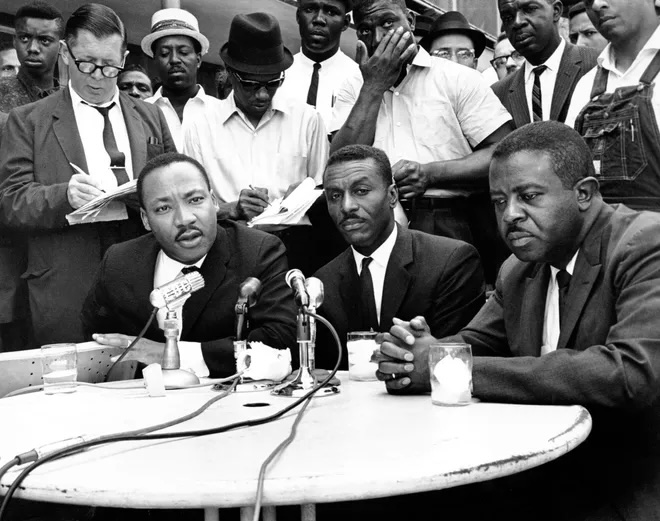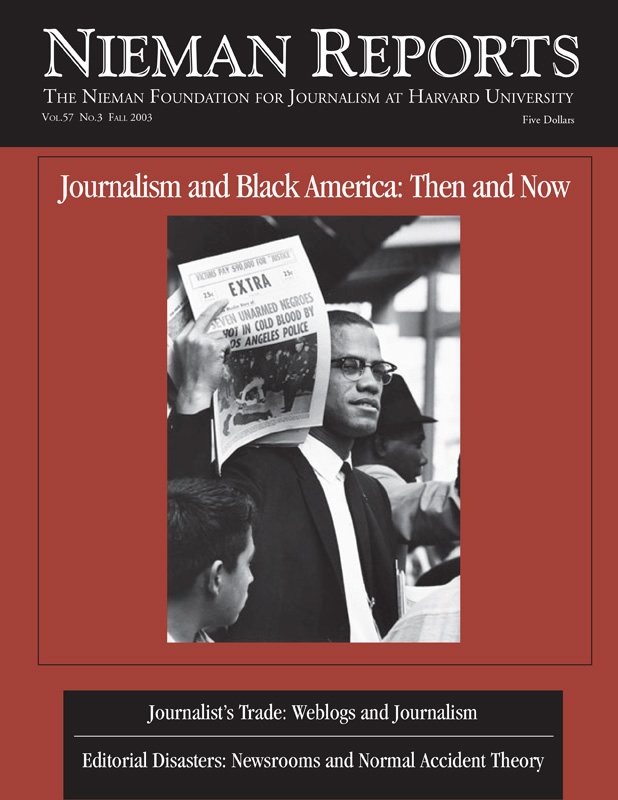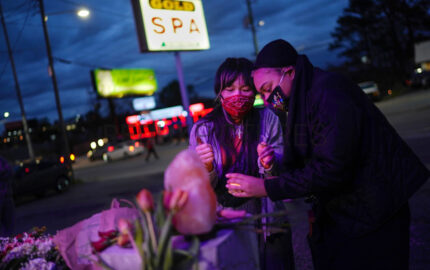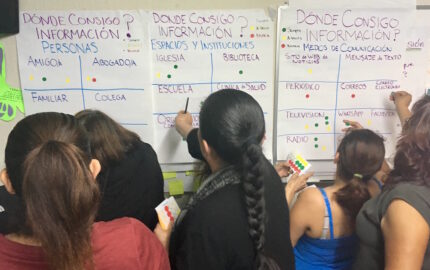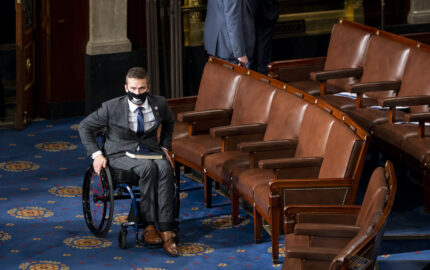In the spring of 1965, as the Los Angeles Times’s recently named Atlanta correspondent, I arrived in Selma, Alabama to find Rev. Martin Luther King, Jr. standing on the courthouse steps, demanding voting rights for blacks. Meanwhile, Sheriff Jim Clark, backed by a mounted force of deputies armed with clubs and cattle prods, was yelling, “Get those niggers off the courthouse steps.”
The story went far beyond that confrontation, of course, and I was new on the civil rights beat. But thanks to help from a superb reporter, The New York Times’s John Herbers, I was able to find my way around a confusing and sometimes dangerous situation. It quickly became clear that reporters on the scene felt so deeply about the importance of this movement that at times they even exchanged information with competing publications. In more than 50 years of reporting, I covered no other continuing story where reporters of rival newspapers routinely shared information.
It was a story where the issue seemed so cut and dry and the injustices so stark that reporters struggled to remain objective, though many found it difficult not to become emotionally involved. Seeing hard-eyed state troopers (always described as hard-eyed—and they were) in Selma slamming their clubs against the skulls of blacks who were demonstrating for the right to vote left reporters feeling there weren’t two sides to this story. And there seemed to be only one side to Jim Crow justice when the only black you could find at a county courthouse would be a defendant or one pushing a broom.
As civil rights leader John Lewis, whose skull was fractured at Selma, wrote in his memoir, “Walking With the Wind,” reporters became “very sympathetic to the movement. … You couldn’t be human and not be affected deeply by these kinds of experiences, in these kind of settings.”
I was reminded of my Selma experience while reading the two-volume “Reporting Civil Rights,” published by The Library of America on the 40th anniversary of the March on Washington. The books—an anthology of covering civil rights from 1941-1973, mostly by journalists but some by authors and civil rights figures—present a compelling history and are a great reference source. As the articles make clear, much of the coverage was exclusive and therefore highly competitive. But when there were massive demonstrations or dangerous situations, reporters willingly briefed each other.
Learning About Reporters’ Coverage
The problems of covering civil rights were especially daunting in the Deep South in the 1950’s and 1960’s. In those years, the white establishment dug in its heels, and the Ku Klux Klan, the white citizens councils, and other racists lashed out at the media, as well as the civil rights movement, in a last-ditch effort to preserve segregation. As Herbers wrote in an April 1962 Nieman Reports article reprinted in the anthology, “fear of being mauled by racists” was just one of many problems reporters faced in Mississippi and other Deep South states where white supremacists ruled with an iron hand.
It was not surprising that Herbers’s article appeared in Nieman Reports rather than the daily press, because in those days journalists generally considered the media’s role in covering just about any story to be irrelevant. Even though the media was a major player in the unfolding drama, the public supposedly wasn’t interested in problems encountered by reporters.
Nevertheless, many journalists, no matter what else they might have covered, look back on that period as the highlight of their careers—a time when the press had a profound impact on the most dramatic and important domestic revolution of the 20th century. News coverage of the civil rights movement helped galvanize public opinion and prod the government to enact and enforce laws to protect the rights of minorities and demolish the old system of segregation and white supremacy.
The anthology includes so many articles by New York Times reporters that the paper might appear to be over-represented. But the Times was far out front in covering the story, not only focusing on it long before other news organizations, but also devoting more resources and top news space to it and thereby helping make it part of the government’s agenda. Claude Sitton, the legendary Southern correspondent of the 1960’s, wrote six of the articles in the anthology, including dramatic accounts of the disappearance of three civil rights workers in Philadelphia, Mississippi, whose bullet-riddled bodies were discovered under an earthen dam; the Birmingham church bombing that killed four little girls, and the assassination of Medgar Evers, a Mississippi NAACP leader.
Related Article
“The Work and Struggles of Black Reporters”
– Dori J. Maynard
Other New York Times reporters whose articles the anthology reprinted include Tom Wicker, Anthony Lewis, David Halberstam, Hedrick Smith, Peter Kihss, Earl Caldwell, E.W. Kenworthy, Nan Robertson, and Roy Reed. Reed, once described to me as the newspaper’s best writer by Abe Rosenthal, then the Times’s executive editor, wrote a vivid account of “Bloody Sunday” (March 7, 1965) when Sheriff Clark’s forces attacked a John Lewis-led voting rights march with clubs, whips and cattle prods, injuring Lewis and 16 others. “The mounted possemen spurred their horses and rode at a run into the retreating mass,” he wrote. “The Negroes cried out as they crowded together for protection, and the whites on the sideline whooped and cheered.”
In those days most newspapers left the coverage of civil rights to the wire services, which mostly offered bland reports. The Washington Post didn’t even open an Atlanta bureau until 1970. Major southern newspapers were no different. The Atlanta Constitution, where I was an investigative reporter before joining the Los Angeles Times, didn’t even staff Selma. In fact, the publisher, Ralph McGill, and the editor, Eugene Patterson, both columnists at the Constitution, used to debrief me on developments in Selma when I’d return to the Times Atlanta bureau.
Both McGill and Patterson had wanted to go to Selma, but Jack Tarver, chief executive officer of both the Constitution and The Atlanta Journal, nixed the idea. Similarly, Constitution editors decided against assigning me to civil rights for fear it would compromise my relations with law enforcement sources and hinder my reporting on corruption in Georgia. Newspaper executives in the South generally thought the less attention given the civil rights movement the better.
However, both McGill and Patterson were liberals who railed against racial injustices in their columns and both won Pulitzer Prizes. McGill won his Pulitzer for writing about hatemongers who bombed an Atlanta synagogue; Patterson was awarded one for his columns decrying violence and injustices, including the Birmingham church bombing.
Happily, the University Press of Florida has published “The Changing South of Gene Patterson: Journalism and Civil Rights, 1960-1968,” a collection of columns written by one of the most gifted writers of our time. In columns carried by the Constitution during that time, he wrote with passion and lucidity about racial injustices and the damage segregation was inflicting on the South.
One column, a poignant account of the church bombing and the collective guilt of southern whites, began: “A Negro mother wept in the street Sunday morning in front of a Baptist Church in Birmingham. In her hand she held a shoe, one shoe, from the foot of her dead child. We hold that shoe with her. Every one of us in the white South holds that small shoe.…” The column ended: “With a weeping Negro mother, we stand in the bitter smoke and hold a shoe. If our South is ever what we wish it to be, we will plant a flower of nobler resolve for the South now upon these four small graves that we dug.”
We often hear newspaper reporting described as the first draft of history. “Covering Civil Rights” and “The Changing South of Gene Patterson” are superb examples and rich reading for anyone interested not only in history, but also in excellent journalism that helped to tell the stories of race in America in the mid-20th century.
Jack Nelson, a 1962 Nieman Fellow, became a reporter at the Biloxi Daily Herald in 1947 after graduating from high school, where his nickname was “Scoop.” He was a reporter for 13 years at The Atlanta Constitution where he won a Pulitzer Prize for exposing conditions at a state mental institution. After serving as Atlanta bureau chief for the Los Angeles Times from 1965 to 1970, he joined the Times’s Washington bureau where he served 31 years, 21 years as Washington bureau chief. He retired at the end of 2001.
